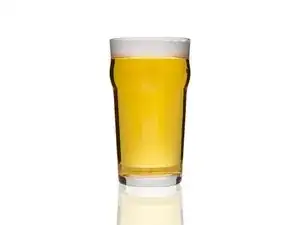
Beer Glassware Guide
Fixing your things can become thirsty work. However, the Author of this Wiki empowers learning and having fun doing so, but please drink responsibly.
Brewing is the process of making Beer by steeping grains, or a starch source like Barley, in water and fermenting the resulting liquid with Yeast. Brewing can be scaled to produce Beer on a commercial level or individually.
While most basic Beers use a fermentable starch source such as Malted Barley, less widely used starches include millet, sorghum, and cassava. Other sources of starch include Corn, Rice, or Sugar, which can be used to reduce cost or add a feature, such as adding Wheat to aid in retaining the foamy head of the Beer.
Typically, Beer is made with water, a starch source such as malted barley, brewer yeast, and a flavoring agent such as hops. Other starch sources such as Corn, Rice, or Sugar can also be used with secondary saccharide as a low-cost alternative to Malted Barley. Alternative starches can also be used as a feature.
Beer is mostly Water. Water can have different mineral components, which make specific Water better for specific Brews. Hard Water is better for Stout, while Soft Water is more suited for making Pale Lagers. However, the type of Water that you use will not drastically affect the taste of the Beer.
The general rule of thumb with water is that if it's good enough to drink, it is good enough for brewing.
The Starch Source provides the fermentable material for a Beer and is a key determinant of its strength and flavor. The most common Starch Source used for Brewing is Malted Grain. Grain is malted by soaking it in water and allowing it to begin Germinating. The Germinating Grain is then dried in a Kiln, allowing the starches in the grain to convert into fermentable sugars.
Different roasting times and temperatures produce different malt colors from the same grain. Darker malts will produce darker beers. Nearly all beer includes barley malt as the majority of the starch. However, brewers have produced gluten-free beer made with sorghum with no barley malt for people who cannot digest gluten-containing grains like wheat, barley, and rye.
Some brews use flavored extracts to skip the mashing process and move directly to the boil and fermentation steps.
Hops act as a flavoring and preservative agent in most beer brewed today; however, Hops weren't widely used until the thirteenth century. Before the thirteenth century, plants such as yarrow, wild rosemary, bog myrtle, and other ingredients such as juniper berries, aniseed, and ginger would be combined into a gruit and used to flavor beer.
Hops are often used in beer brewing as they have several highly sought-after characteristics by brewers. They contribute bitterness to the beer that balances the sweetness of the malt; they provide floral, citrus, and herbal aromas and flavors.
Yeast is the microorganism that allows beer to ferment. It eats the sugars extracted from the starch source and creates alcohol and carbon dioxide.
The type of yeast you use can greatly affect the characteristics and flavor of the beer.